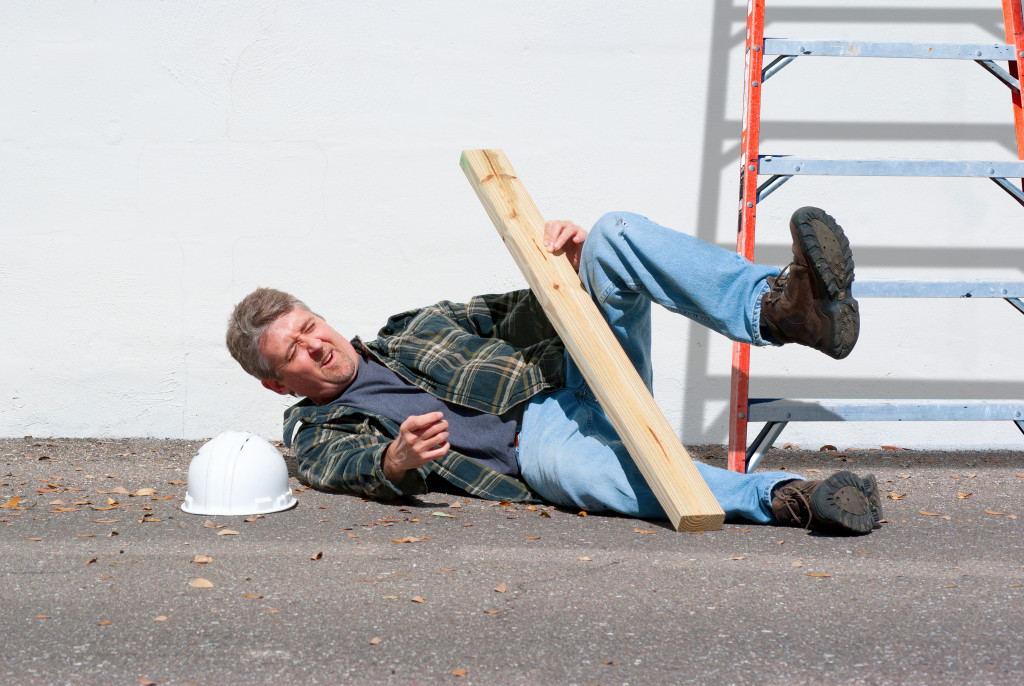One of the ways people spend their time in the ongoing pandemic is by renovating their homes. Sprucing up your space is fun. It allows you to discover nooks and crannies you’d otherwise ignore under normal circumstances. As such, your home can be much more functional and efficient after renovation. You might also realize that you don’t need more space but rather less stuff.
But the process of renovating itself is rough. Stripping your home bare of furnishings can be overwhelming, particularly if you’re going to DIY. Without knowledge of space planning, you may not know how to get the most out of a room. In addition, a full-scale renovation typically includes repainting and replacing certain fixtures. Those aren’t only rough projects but risky as well.
Using power tools and going up ladders is dangerous even for pros. What more if you’re an amateur? If you get injured, you won’t have worker’s compensation benefits, which construction workers are afforded.
Is there anyone for you to blame, or are you accountable for your own injuries?

Risks of DIY Home Renovation
A study by Porch has revealed the most dangerous tools in America used in DIY home renovations. Porch created an infographic that showed the estimated number of injuries caused per tool. The top ones were the following:
- Ladders: 193,815 injuries
- Hardware (nails, screws, and tacks): 124,558
- Lawnmowers: 89,608
- Power saws: 81,240
- Cleaning equipment: 57,297
- Manual garden tools: 55,908
- Knives with replaceable blades: 46,354
- Cleaning agents (except soap): 45,340
- Grinders, buffers, polishers: 37,265
- Chain saws: 30,872
- Hammers: 30,374
- Unspecified tools: 30,030
- Pruning equipment: 26,853
- Trimmers, small power garden tools: 25,827
- Gas and fuel: 22,710
It is surprising indeed that cleaning equipment caused more injuries than chain saws. But it’s not a shock that ladders were the most dangerous tool. You could fall from a ladder because you didn’t use protective equipment, such as a harness. No matter what height you fell from, you could injure your head upon impact.
Hardware can cause injuries if you step on them, even with shoes on. A nail pointing upward can pierce through the sole of the footwear. Lawnmowers, though generally safe, can become dangerous while their blades are being changed. You could accidentally cut your finger with it. Power saws are similar, though they’re more dangerous while being operated.
Cleaning equipment can cause injury because of its weight or design. For example, a heavy bucket of water can injure your back or make you lose balance. Similarly, manual garden tools can cause back injuries because of posture issues and the repetitive way they are used.
Knives with replaceable blades may accidentally cut you if you’re not careful. On the other hand, cleaning agents might contain substances that, when mixed, can create toxic gases.
Those are just a few examples of how these tools can injure you. Now, let’s delve deeper into the dangers they pose.
Types of Injuries from DIY Home Renovation
-
Trips, Slips, and Falls
Since a home renovation uses many tools, you’d find wires scattered all over the floor all the time. They create trip hazards. If the floor is slippery and construction dust settled on top of it, you could slip and injure your back or hip. Lastly, ladders and stepping tools pose a fall hazard if you use them unsupervised.
-
Cuts, Struck-by’s, Caught-in-machines
Power tools or anything sharp — like pruning equipment — can cut you if you’re not careful. Hammers, garden hoes, or anything handheld pose struck-by hazards. If someone using a hammer accidentally flings it, it could hit you in the head or face. Caught-in-machine injuries, meanwhile, can happen if you’re not paying attention while using a power tool like a chain saw.
-
Lead Poisoning
Though lead has already been banned around 40 years ago, lead paint is still illegally sold in some places. Some cleaning agents or solvents may contain it, too. Inhaling lead in large amounts can cause brain and nervous system damage, comatose, convulsions, and death.
Who’s At Fault?
The liable party in injury cases depends on the situation. If bad design, defective products, or undisclosed product information causes the injury, the manufacturer or retailer of the tool or product can be held liable. For example, if the paint you used caused lead poisoning and brain damage, but the paint packaging didn’t include lead in the ingredients, you can sue the paint’s manufacturer with the help of a brain injury attorney. That may be a case of fraud or negligence on the part of the manufacturer.
If your injury is caused by your own carelessness, you can’t hold anyone accountable but yourself. Hence, if you’re not confident in your DIY skills, entrust your home renovation project to pros. It would be less risky, and the outcome will be much more polished and streamlined.
